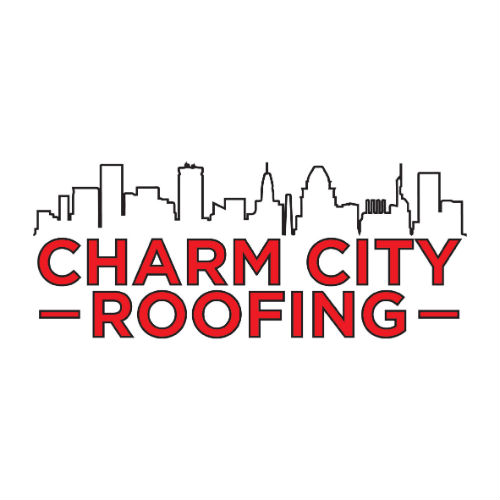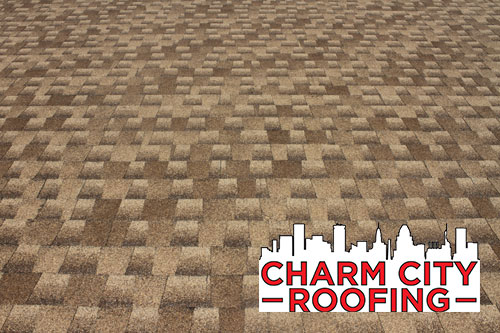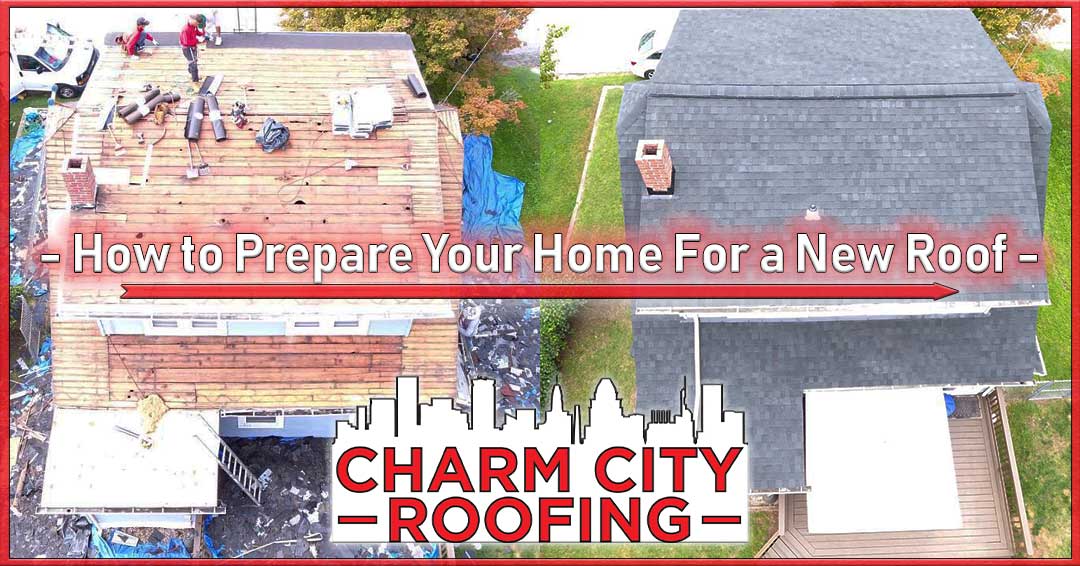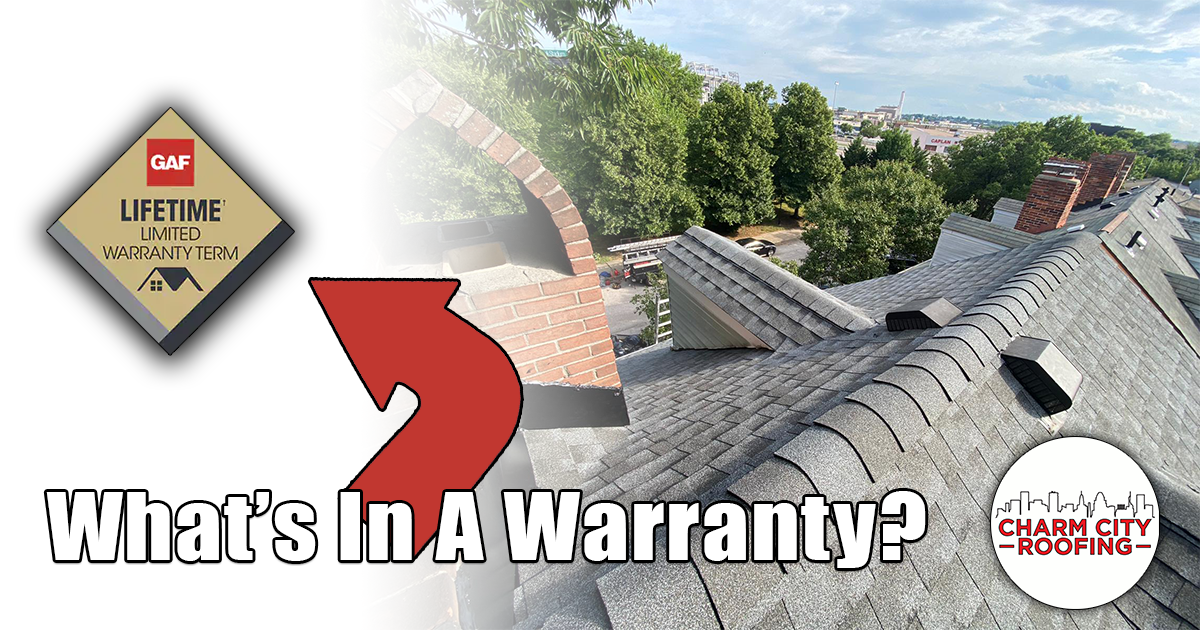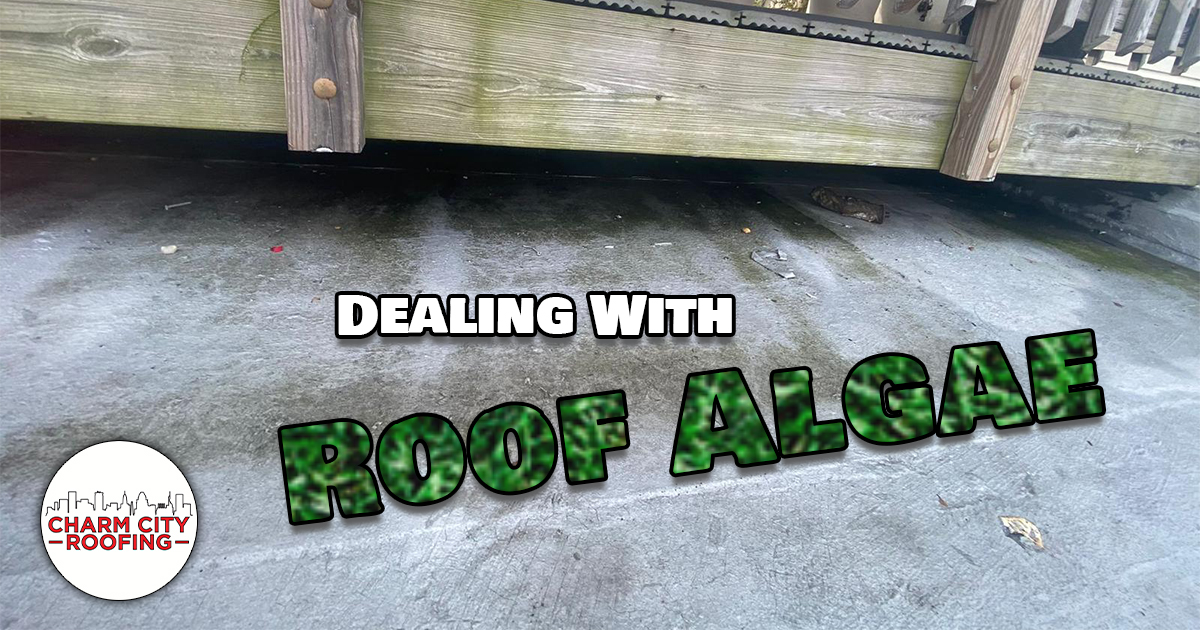
Dealing With Roof Algae
HOW TO DEAL WITH ROOF ALGAE
You might think of algae as something that lives only in the rainforest or on the surface of ponds. But did you know algae could be living right above your head?
Roof algae is a common issue, especially in more humid climates like Maryland. Over time, certain bacteria start to make a home in your shingles or substrate. This creates a breeding ground for algae, fungi, and their symbiotic product, lichen.
What Is Roof Algae?
Algae is a term that refers to a large group of aquatic plants. Kelp, for example, is a kind of algae, although we’ve yet to see it growing on anyone’s roof. Roof algae is typically a smaller, less obvious kind of growth.
Sometimes, the only sign of roof algae is a bit of discoloration. If you’ve noticed dark streaks or spots on your roof recently, it could be a sign of algae. Other times, the growth is more obvious. Some homes develop a blanket of green, mossy plant life.
The signs of algae growth on your roof are often unsightly, and ultimately damage the integrity of the roof itself. Algae growth can also be a sign of other unaddressed roofing issues.
Any roof can develop an algae issue. Most varieties spread airborne spores in the spring and summer months. All it takes is a gust of wind, and your roof could be the next home for a family algae.
Why Is Roof Algae Bad?
The reason to avoid algae is simple— it eats your roof. Algae requires water, heat, and nutrients to survive. In humid climates, the first two ingredients are provided by the sun and the natural moisture in the air. However, algae often derives its nutrients from the shingles on your house.
Asphalt shingles contain a fair amount of filler— non-asphalt materials that led structure, color, or other benefits to the shingle. Limestone is a common filler, as it toughens the shingles and prevents cracking. It also increases the shingle’s reflectiveness, which makes it less likely to bake in the sun.
Unfortunately, limestone is an excellent snack for algae. As a highly alkaline material, it provides everything young algae needs to grow big and strong. It’s also highly soluble, making it easy for the algae to derive minerals from the asphalt.
Over time, algae will eat away and weaken the shingles on your roof. This will make them more likely to crack, spring leaks, and even detach completely. Leaks can be a pain to track down, so it’s best to keep your shingles in good health. A roof with algae on it will have a shorter lifespan and be less effective than a clean, plant-free roof. In some cases, it can even damage your roof’s underlayment.
On top of that, a bad algae problem lowers the curb appeal of the household. This might not seem like a big deal, but it can impact the selling price of a home. Households with lower curb appeal can see their value drop up to 14%. If you’re looking to sell your home in the near future, it’s a good idea to remove any growth.
An algae problem can also be indicative of other issues in the home. Poorly ventilated attics will create warmer roofs, which often have more algae. If your attic is poorly ventilated, your house is more likely to have issues with mold and energy efficiency. (To learn more about proper roof ventilation, check out this article.)
How Do I Know If I Have Roof Algae?
Sometimes, roof algae is easy to identify. If your house’s roof looks like the mossy floor of a forest, for example, it’s clearly suffering from algae overgrowth. If you see tufts of green, black, or blue plant life peeking out from under the shingles, it’s probably algae. These tufts tend to accumulate in areas where water is funneled, like roof valleys.
Some signs are more subtle, however. Dark streaks on shingles can be a sign of algae growth, as can dark splotches. These can sometimes be tricky to see, appearing more like shadows or dampness. If you suspect you might have an algae problem, getting a professional assessment is the best way to confirm it.
If your attic is hot and humid, especially in the summer, you’re more likely to develop an algae problem. This is usually a sign that your attic’s ventilation is lacking, and warm roofs produce more algae. If your shingles seem to be deteriorating more quickly than you’d expect, there’s a chance algae is weakening them.
What Do I Do About It?
Luckily, there are many solutions to algae problems! In mild cases, a roof might simply need a good cleaning. There are a number of environmentally-friendly cleaners on the market specifically for roof shingles. It’s best to use cleaners that don’t have harsh chemicals, as there’s a good chance the runoff will find its way into your garden or lawn.
If the damage is worse, however, a more in-depth roof repair might be necessary. Missing or damaged shingles as a result of algae growth need to be replaced. Professional roofers are a great resource to learn more about whether your roof needs a repair or a simple cleaning.
There are steps you can take to limit the growth of algae in the future! Zinc strips will create an inhospitable environment for most algae. You can also talk to your roofer about getting specialized anti-algae shingles, which are widely available. Finally, trimming any overhanging tree branches can eliminate moist, shady areas from your roof. This in turn will slow the growth of algae.
The Bottom Line
Roof algae will cause damage to your shingles and unsightly discoloration, but it’s usually not hard to treat. A good scrubbing, either on your own or with a professional service, is often enough to send algae packing. If you’re unsure about the best course of action, call your local roofer for personalized, professional advice.
Author: Wilden McIntosh-Round
